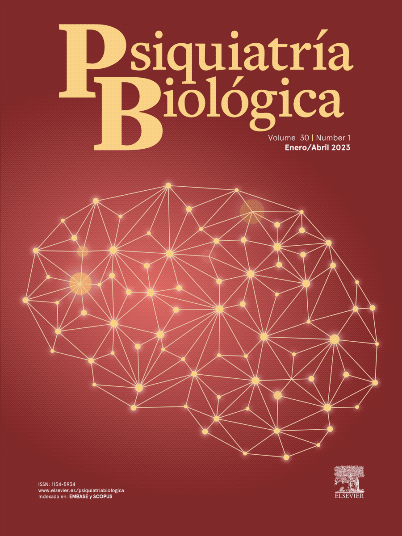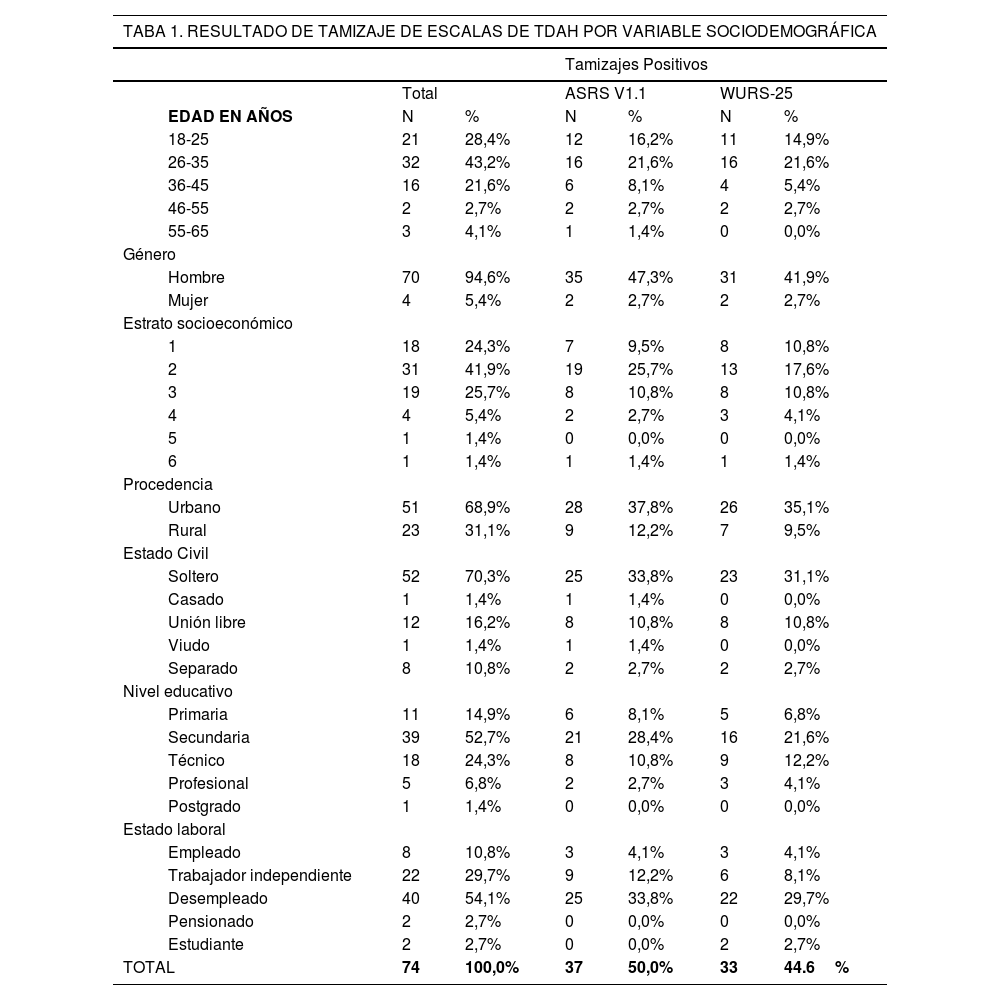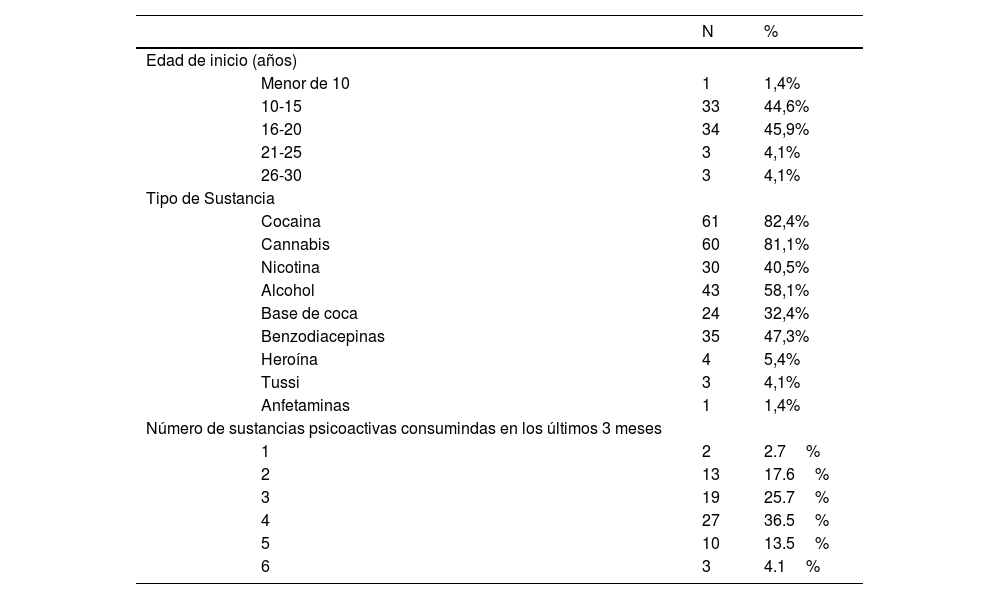El Trastorno por Déficit de Atención e Hiperactividad (TDAH) se considera un trastorno en el neurodesarrollo que se presenta normalmente en la infancia y puede continuar a la adultez. A afecta principalmente tres áreas dadas por la atención, el control de impulsos y la hiperactividad, los cuales terminan afectado el desarrollo psicosocial, relaciones interpersonales y nivel académico del sujeto. La prevalencia varía dependiendo del grupo etario, sexo y lugar, sin embargo, se estima en un 7% global en población pediátrica y persiste en un 4.5% en adultos. Se ha encontrado que los síntomas del TDAH predicen el consumo de tabaco, alcohol y cannabis; y adicionalmente, de no ser tratado, se estima que hasta el 50% de las personas con TDAH manifestarán un trastorno por uso de sustancias en algún momento de su vida, sin embargo no se tienen datos de dicha comorbilidad en nuestra población, por lo que consideramos necesario determinar la prevalencia del TDAH en la población hospitalizada por Trastorno por Consumo de Sustancias en la unidad de salud mental mediante el tamizaje con escalas de autorreporte. Aquí reportamos la caracterización sociodemográfica, el patrón de consumo y las comorbilidades de dicha población, así como el resultado del tamizaje con las escalas Wender- Utah (WURS-25) y Adult ADHD Self Report Scale (ASRS V1.1). El estudio incluyó un total de 74 sujetos que se encontraban hospitalizados en una unidad de salud mental localizado en Barranquilla, Atlántico, con diagnóstico de TUS. Se encontró que el 50% de los pacientes puntúa positivos para diagnóstico de TDAH según la escala ASRS, diagnóstico probable 20.3% y poco probable el 29.7%, con un 44.6% de positivos en la escala WURS-25. Los resultados del presente estudio sugieren que el tamizaje para el TDAH es una herramienta útil para detectar la comorbilidad en aquellos pacientes que presentan un TUS, los cuales podrían ser beneficiados con un tratamiento integral para ambas patologías y así impactar en el curso y pronóstico de la enfermedad, como en su funcionalidad y calidad de vida.
Attention Deficit Hyperactivity Disorder (ADHD) is considered a neurodevelopmental disorder that typically presents in childhood and can continue into adulthood. Mainly affects three areas given by attention, impulse control, and hyperactivity, which end up affecting the psychosocial development, interpersonal relationships, and academic level of the subject. The prevalence varies depending on age group, sex, and location; however, it is estimated at 7% overall in the pediatric population and 4.5% in adults. ADHD symptoms have been found to predict tobacco, alcohol, and cannabis use; and additionally, if left untreated, it is estimated that up to 50% of people with ADHD will manifest a substance use disorder at some point in their lives, however there are no data on such comorbidity in our population, so we consider necessary to determine the prevalence of ADHD in the population hospitalized for Substance Use Disorder (SUD) in the mental health institution through screening with self-report scales. Here we report the sociodemographic characterization, drug use pattern and comorbidities of this population, as well as the result of screening with the Wender-Utah scale (WURS-25) and Adult ADHD Self Report Scale (ASRS V1.1). The study included a total of 74 subjects who were hospitalized in a mental health institution located in Barranquilla, Colombia, with a diagnosis of SUD. It was found that 50% of patients scored positive for ADHD diagnosis according to the ASRS scale, probable diagnosis 20.3% and unlikely 29.7%, with 44.6% positive on the WURS-25 scale. The results of the present study suggest that screening for ADHD is a useful tool to detect comorbidity in patients with SUD, who could benefit from comprehensive treatment for both pathologies and thus impact the course and prognosis of the disease, as well as their functionality and quality of life.
Artículo
Comprando el artículo el PDF del mismo podrá ser descargado
Precio 19,34 €
Comprar ahora











